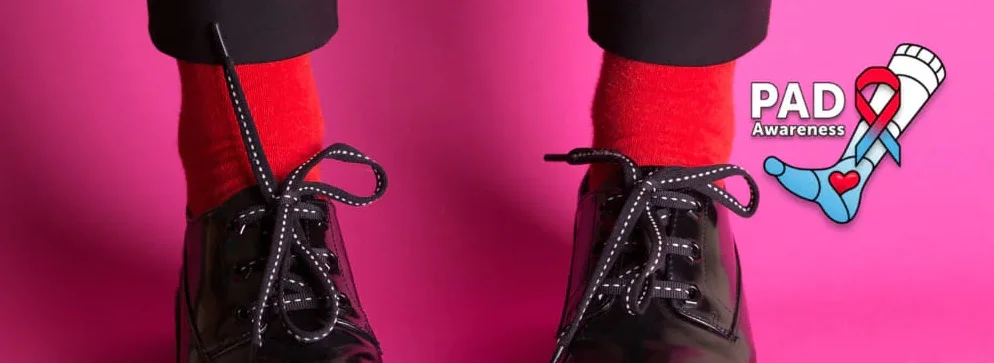Wear your red socks on National Red Sock Day to help save a life and limb! Did you know leg health can indicate risk for heart attack, stroke, and amputation? One in five adults over the age of 60 have a condition called Peripheral Artery Disease (P.A.D.), and many don’t even know they have it. National Red Sock Day on the Third Saturday in February raises awareness about P.A.D., its risk factors, and what you can do.
#NationalRedSockDay
P.A.D. is caused by plaque build-up in the peripheral arteries, mainly the arteries in the legs. It is the most debilitating disease many people have never heard of, and yet, it is responsible for nearly 200,000 amputations annually. More than half of those amputations are preventable with early diagnosis and treatment.
P.A.D. Symptoms
- Leg pain
- Leg cramps
- Neuropathy
- Tingling
- Numbness
- Non-healing foot ulcers
Additionally, 3 in 5 heart attack sufferers have P.A.D. This is why National Red Sock Day takes place in February, which is also American Heart Month.
P.A.D. Risk Factors
- Diabetes
- Cardiovascular disease
- High blood pressure
- High Cholesterol
- Smoking
- Obesity
- Hereditary
Diabetics are one of the highest risk groups with cases rising fast. More than half of American adults have Pre/Diabetes, and the most prevalent complication is vascular. In fact, 1 in 3 diabetics over 50 have P.A.D. However, the most horrifying aspect of this disease is that most people don’t know they have it until it reaches its advanced stages. P.A.D. can lead to heart attack, stroke, and amputation. Diagnosis and appropriate treatment in early stages can help keep life and a limb healthy longer. Diagnosis involves checking leg pulses in patients over age 50.
National Red Sock Day aims to raise awareness and encourage a candid conversation between patients and their physicians to test sooner for P.A.D.
HOW TO OBSERVE NATIONAL RED SOCK DAY
Wear your red socks on National Red Sock Day to help raise awareness about P.A.D. The red sock design symbolizes good circulation, keeping life and limb healthy. The blue toe and heel indicate how poor circulation in the feet can indicate risk for heart attack, stroke, and amputation. Help The Way To My Heart expand critical life and limb saving P.A.D. education, advocacy, and support by purchasing official P.A.D. Awareness Socks at www.TheWayToMyHeart.org/Red-Sock-Day
Have a conversation with your doctor about P.A.D. Make sure to report risk factors, including a history of high blood pressure, cardiovascular disease, obesity, diabetes, and smoking. If you need help explaining your symptoms, The Way to My Heart offers various resources to guide you.
Another way to participate is by donating to The Way to My Heart’s campaign. You can also follow The Way to My Heart on Facebook.
Also, please share the word on social media using #NationalRedSockDay to help raise awareness.

